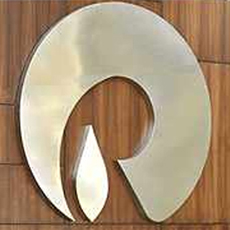 Fitch on Thursday affirmed highest grade to Mukesh Ambani-led Reliance Industries' long-term national rating on the back of the company's ability to generate robust cash flow from operations and a strong liquidity position.
Fitch on Thursday affirmed highest grade to Mukesh Ambani-led Reliance Industries' long-term national rating on the back of the company's ability to generate robust cash flow from operations and a strong liquidity position.
The rating agency has affirmed the company's National Long Term Rating at 'AAA' with a stable outlook.
Besides, the Long-Term Foreign Currency Issuer Default Rating was affirmed at 'BBB-' with a stable outlook and the LT Local Currency IDR at 'BBB' with a positive outlook, Fitch said.
"The ratings reflect RIL's strong business profile in theoil and gas business with vertical diversification across the supply chain (upstream, refining and petrochemicals), efficient refining operations and dominant position in the Indian petrochemicals sector," Fitch said.
Besides, the ratings also reflect RIL's large scale of operations in key product lines, ability to generate robust cash flow from operations and a strong liquidity position.
The 'AAA' national rating denotes the highest rating assigned by the agency and is assigned to issuers or obligations with the lowest expectation of default risk.
'BBB' denotes a moderate default risk.
Fitch said the upstream earnings before interest taxes declined in fiscal 2012 and is likely to fall further in the short term, owing to fall in natural gas production at Krishna Godavari (KGD6) block since FY11 and the sale of RIL's 30 per cent stake in its 21
However, after the Reliance-BP deal, RIL raised $7.2 billion, thus "substantially increasing its cash reserves and eliminating any immediate credit concern from falling cash generation from its Indian upstream operations," it said.
Furthermore, RIL will likely benefit from increased production from its US shale gas JVs from FY13, Fitch said.
"Although gross refining margins -- which reduced to $9 per barrel in 9MFY12 from $12.2 per barrel in FY09 -- tend to be volatile, RIL has mostly maintained these above global benchmark," Fitch said.
Expected lower gas production from KGD6 and refining and petrochemical margins in FY13 will lead to weaker cash flows in the short-term. But, RIL is likely to maintain comfortable financial risk profile, driven by its low financial leverage and strong liquidity.
"As the largest private sector corporate in India, RIL has easy access to external financing sources. It also has a strong liquidity position, access to significant un-utilised working capital banking lines and treasury stock holdings," Fitch said.
Fitch, however, said that it lacks clarity on RIL's strategy of ramping-up domestic gas production and utilization of significant cash balances.
Besides RIL is exposed to oil commodity price cycles.











 © 2025
© 2025